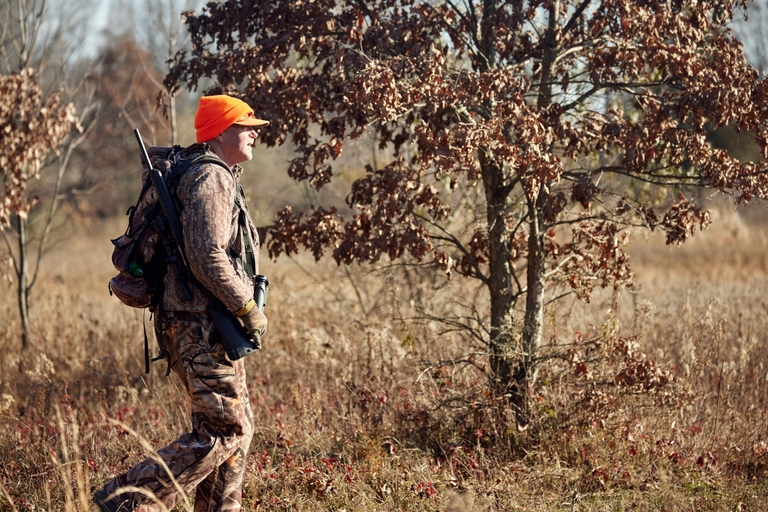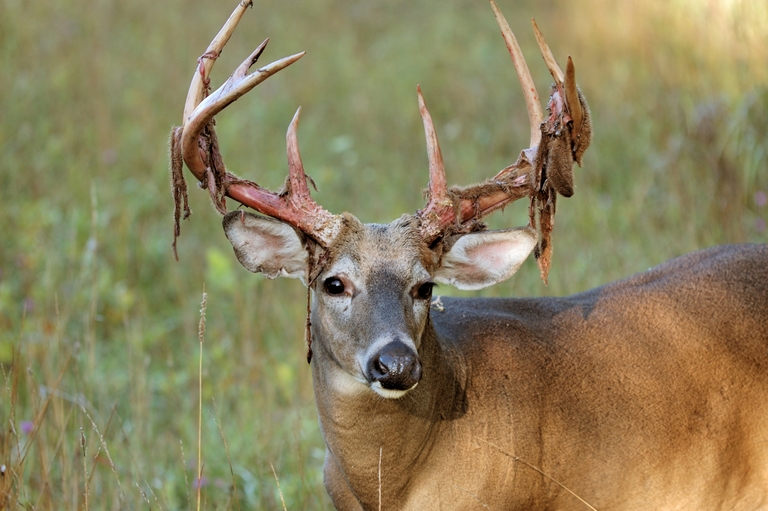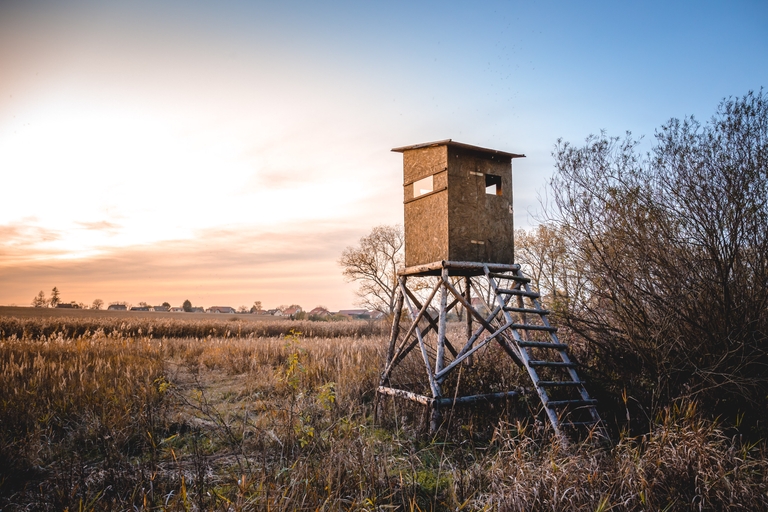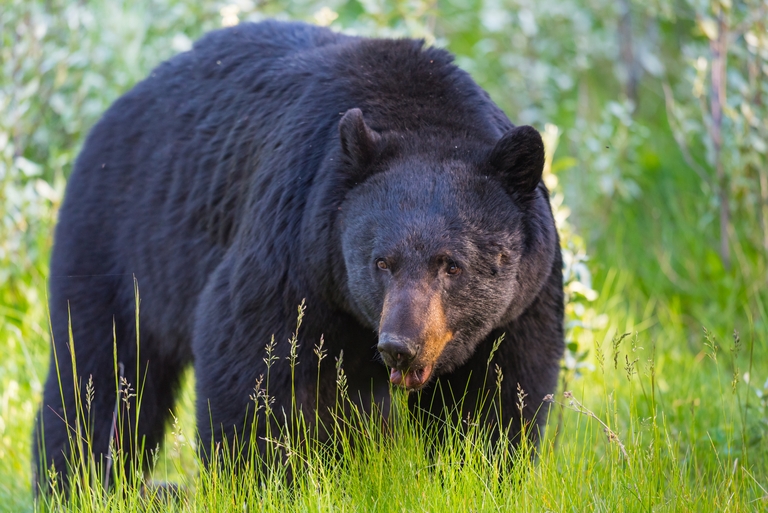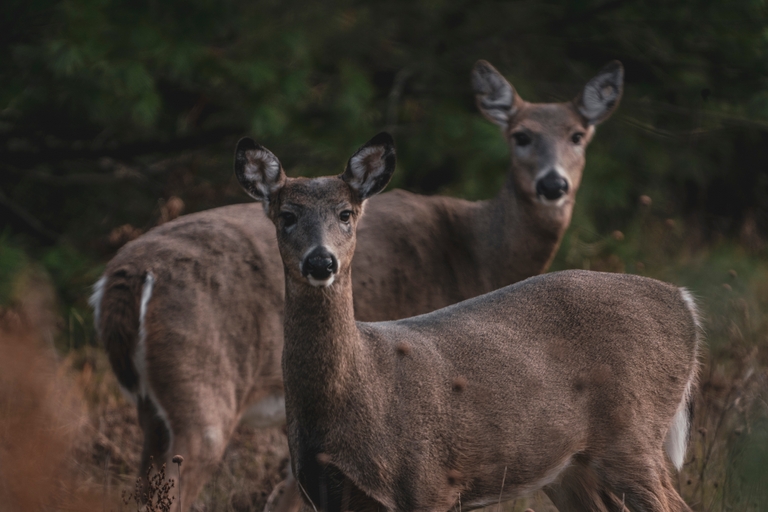How to Stay Safe When Carrying a Hunting Knife in the Field
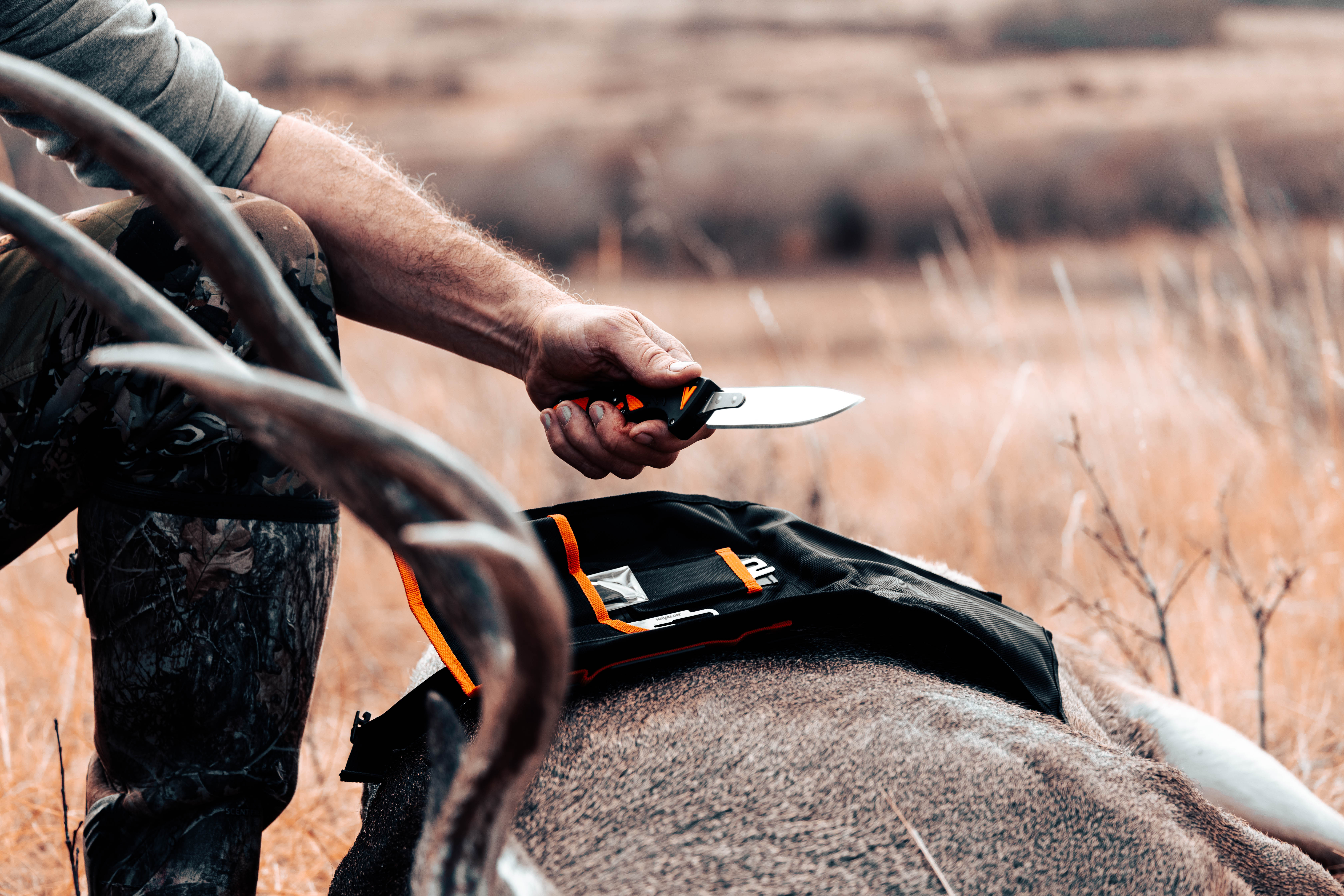
A sharp and well-made knife is an invaluable tool when in the field. Whether dressing a kill or cutting some rope to set up camp, a trusted fixed blade is always high on the list of hunting gear essentials.
It's important to remember that hunting knives can cause serious injuries when not handled correctly. As always, you are responsible for your safety in the field, and following knife-carrying and usage best practices is essential to prevent accidents.
Let's examine some hunting knife carrying and treatment strategies to keep your blade sharp and your fingers attached!
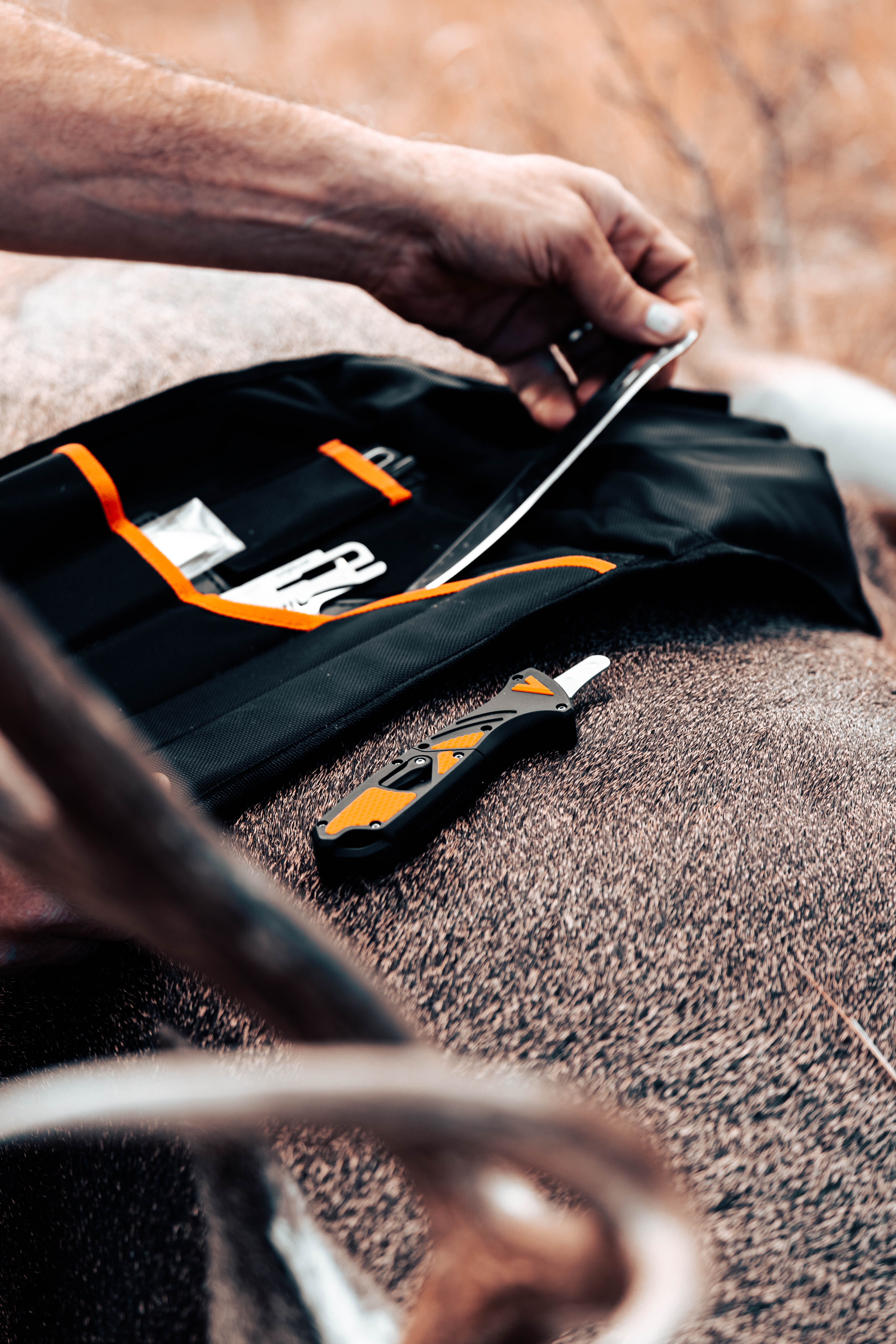
Why Carry a Hunting Knife?
When out in the field, a sharp and robust hunting knife is used for a range of different tasks, including:
- Field dressing, skinning, and quartering: As an ethical hunter, you know the importance of utilizing every last bit of an animal when harvesting. A hunting knife can be used to dress the animal, which involves removing internal organs to avoid spoiling the meat, skinning to remove the hide, and quartering for easy carry. As field dressing is often done far from camp or transport, a sharp knife is essential for quick processing to ensure the meat doesn't go rancid.
- Butchering: A strong blade can butcher meat for cooking and transport in the field or base camp.
- Cutting away brush: When moving through dense areas, you'll reach for your blade to cut away dense brush and clear your path.
- Bushcraft tasks: Cutting rope, opening packets, cutting fabric to administer first aid, or any other inventive way to utilize your blade when doing bushcraft tasks.
Going out into the field without a sharp, quality knife can leave you without a crucial resource to help you return home safely with your trophy.
The Laws Around Hunting Knife-Carrying
Before heading out into the field with a blade, you should have a firm understanding of the knife-carrying laws. Compliance will help you avoid fines and any legal issues that might arise.
Be sure to check the relevant legislation for your state and contact the local police or forest service if you need clarification on any laws. Age restriction, blade length, style, concealment, and more may all factor into your local laws regarding knife carry.
Choose The Right Knife
Comfort is essential when choosing the right knife – a knife that's too big will be hard to handle, whereas one that's too small might not be able to perform the required tasks.
When choosing the right blade, it's essential to prioritize functionality over aesthetics and consider your requirements and budget. In terms of size, blades between 3" and 6" are generally the preferred lengths for hunters.
Here are a few more points to consider when choosing your knife.
Fold vs. Fixed
Fixed blades: These are a sturdier option as there are no moving parts and hinges, so there is less friction. Additionally, they're easier to clean and more accessible to control in the hand.
Folded blades: A folded blade is a safer option, as it can be 'tucked away' and does not require a sheath but can degrade faster.
Always consider strength, durability, intended uses, and safety when determining a knife type.
Clip vs. Drop
Clip point: A clip point knife has a straight clipped area at the tip of the blade, creating a sharp point that can be used for piercing and stabbing. This makes it invaluable in the early stages of a field dress.
Drop point: A drop point has a continued gradual edge from the spine to the tip of the blade, making it a more rounded and 'straighter' blade. It's a more robust option with less precision than a clip point but greater strength.
Stainless Steel vs. Carbon Steel
Stainless steel: These knives are more rust-resistant but harder to sharpen. They're also more water resistant, making them more durable on rainy winter mornings.
Carbon steel: Knives made from carbon steel are less resistant to rust but are easier to sharpen and can produce a sharper blade. Carbon steel is generally the cheaper option of the two.
Synthetic vs. Natural Materials
Handle material impacts grip and durability, so it's essential to consider the following options carefully.
Synthetic materials: G10 (fiberglass), Micarta (blended), and carbon fiber are popular synthetic handle compositions. Synthetics may be more durable and able to withstand the elements, especially when wet.
Natural materials: For a classic old-school feel, handles made from wood or bone are comfortable options that, while they may feel more comfortable in hand, will require special attention and care.
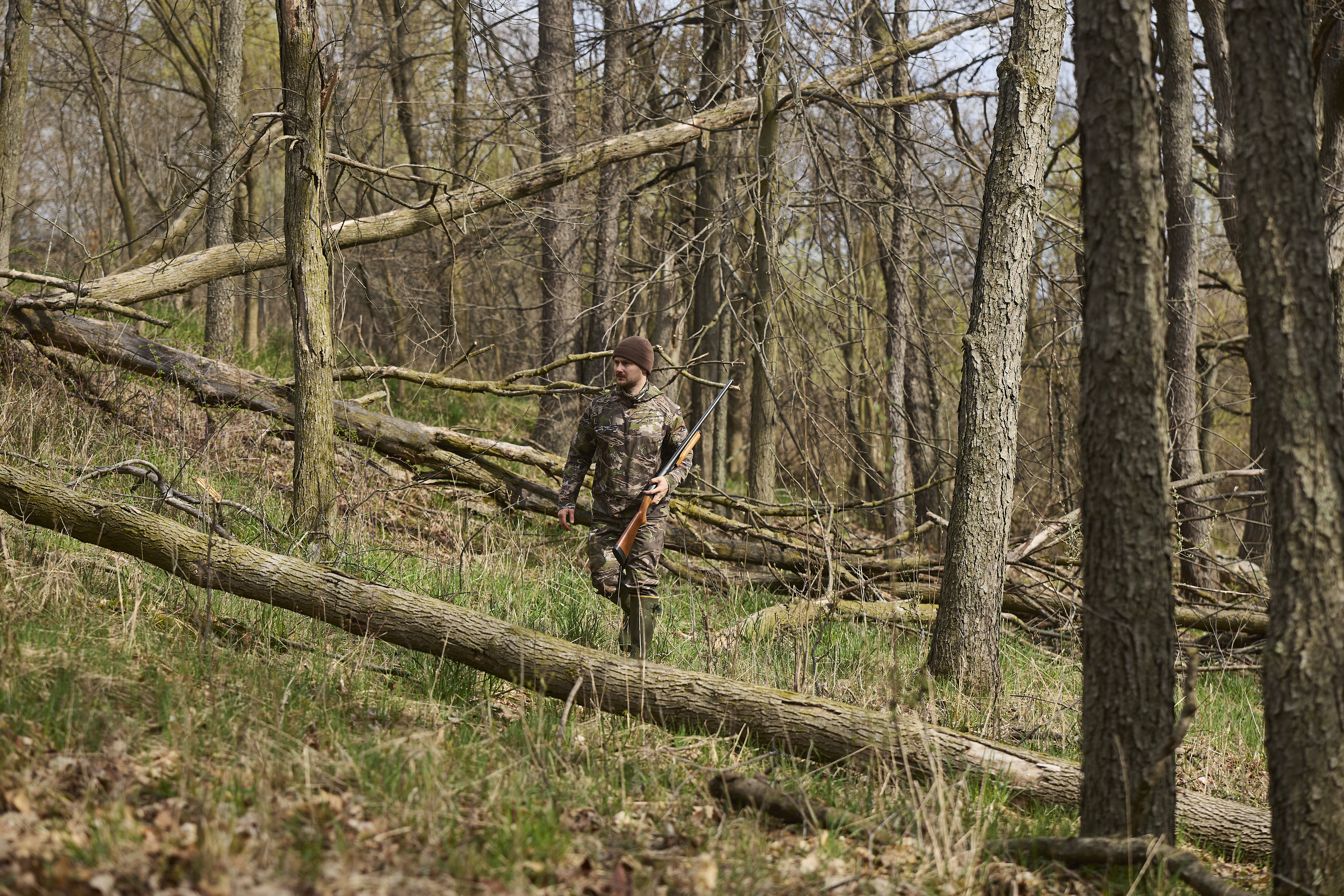
Proper Knife Handling
Before heading out on a hunt, you should be confident and proficient with your blade. To begin, practice knife handling, including gripping and cutting, and only use your knife only for its intended purposes to avoid wear and damage.
Consider taking a field dressing course, watching YouTube for tips, and speaking to hunters about their knife care and handling strategies.
Additionally:
- Never throw the blade or leave it lying around when in the field (especially around children).
- Don't carry the knife unless you are actively using it.
- Never run or climb, and avoid moving with the knife as much as possible.
Finally, get comfortable with your sheath, and practice removing and sheathing your knife safely and cautiously.
Practice Good Knife Care
Knife care is essential for blade longevity and personal safety and involves care in the field and at home. Follow the steps below for quality care of your knife.
Keep a Sharp blade
While it may seem counterintuitive, a sharp knife is safer than a blunt one as it requires less force to cut, minimizing the risk of slippage.
You should regularly sharpen your knife with a whetstone at home, carry a honing rod for quick touch-ups in the field, and consider a sharpening system if you're a beginner looking for a guided angle.
Regularly inspect your blade for chips and cracks and address them with your whetstone or a professional if the damage is extensive.
Keep It Clean and Store It Properly
Clean your blade with a mild soap and water to keep it free from bacteria and less rust-prone. After cleaning, dry thoroughly and store in a safe, dry area away from moisture and humidity.
Consider applying blade oil (check manufacturer recommendations) to protect against corrosion and maintain a smooth edge.

Take Care of Your Hunting Knife, and It Will Take Care of You
Without blades, we wouldn't be the hunters we are today.
Whether it's a hunting knife or a rifle, there's always an elevated risk and expectation of safety precautions when using these tools in the field. So, if you think it's time to level up or refresh your knowledge of knife use or hunter safety in general, it's time to take a hunter safety course.
Hunter-Ed provides online, state-approved hunting education courses covering everything from firearm safety to blaze orange regulations and how to field dress game. Knife safety is only one aspect of staying safe on a hunt! Be sure you have the knowledge you need to keep yourself (and others) safe this season.
Find the course for your state and start learning with our free study guide.

